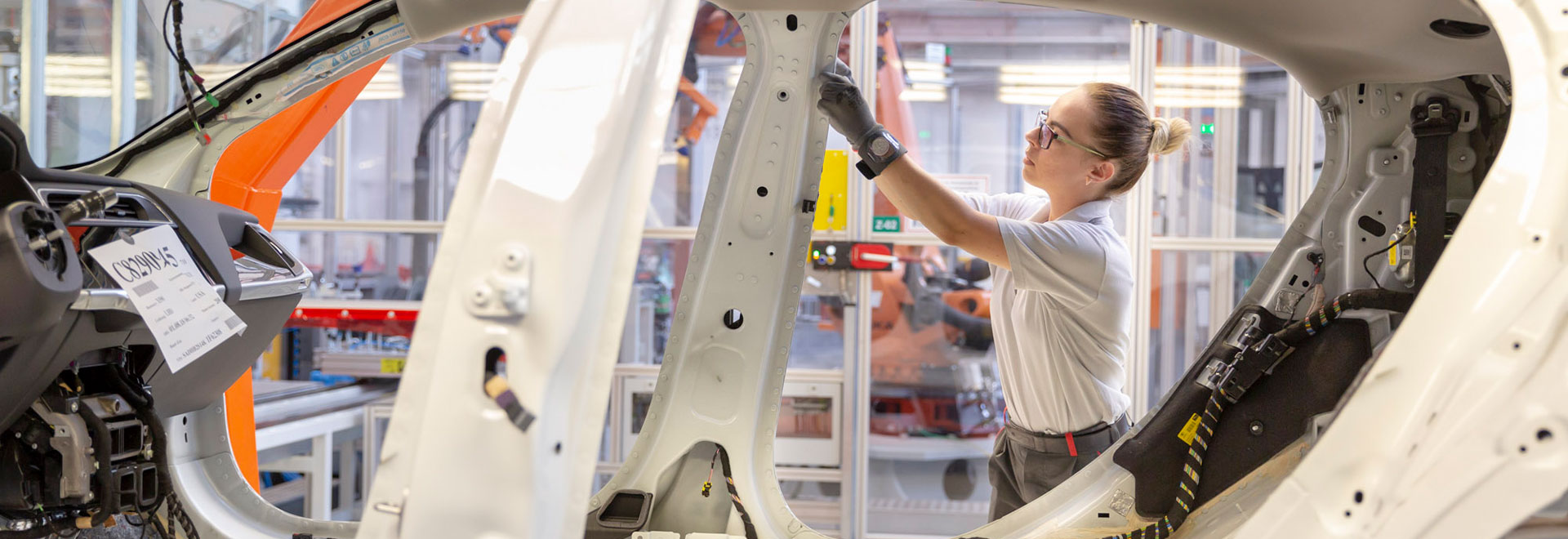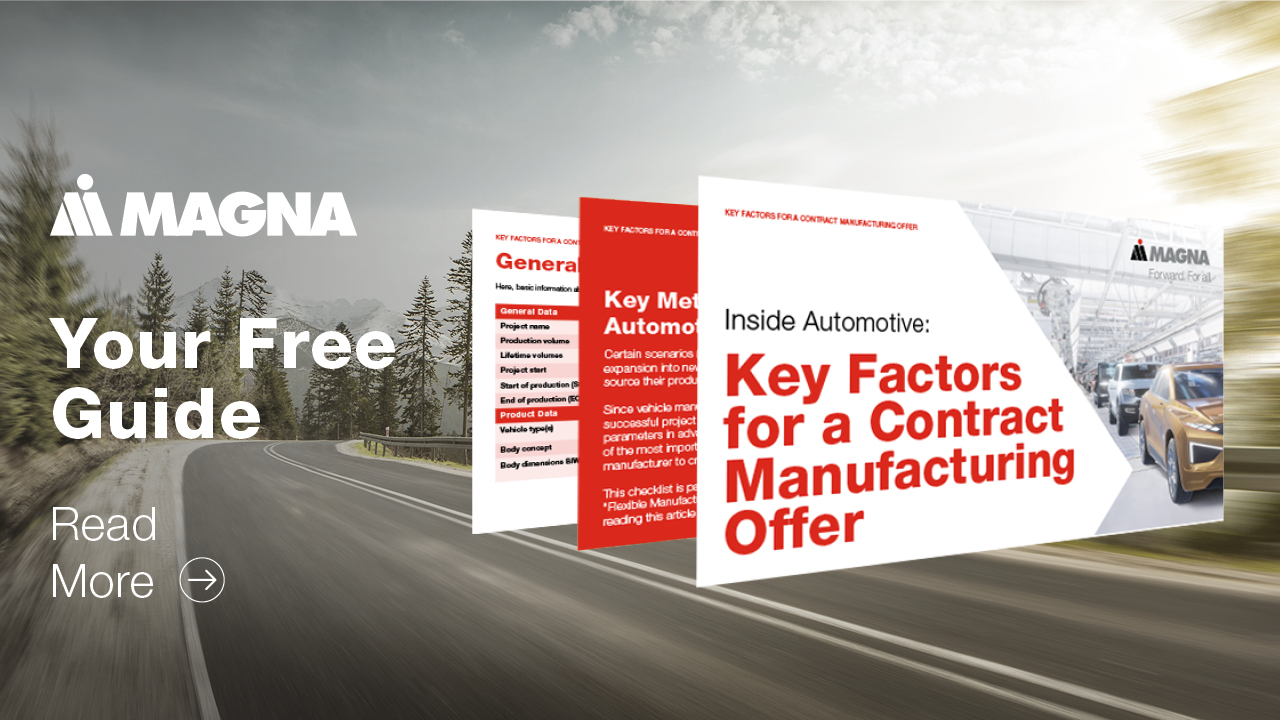THE MODEL-SPECIFIC ADAPTABLE FLEXIBLE GEO SKID ENABLES UNRESTRICTED MODEL MIX-UP ON THE BIW ASSEMBLY LINE
Although manufacturers also integrate different vehicle bodies on one line – e.g. sedans, station wagons, hatchbacks or SUVs – they still build upon uniform underbodies. Multi-OEM manufacturers, on the other hand, need to be able to manage different underbodies. In other words: Their assembly processes must be able to manufacture different vehicles on one line that have nothing in common – neither in their base architecture nor in their docking points.
Subsequently, an integration system such as the Flexible Geo Skid is needed that can handle all car bodies of each line. The Flexible Geo Skid constitutes a uniform base frame on which model-specific mounts are attached backlash-free using zero-point clamping systems, ensuring geometric precision right from the get-go. Unlike with one-directionally variable carriers that are also used by some manufacturers, the Flexible Geo Skid ensures complete adjustability of all docking points for each individual vehicle.
Magna has become a pioneer in such concepts since the Flexible Geo Skid’s inception in 2022 – although some notable OEMs are already working on similar concepts. For example, to integrate the production of different vehicles with different propulsion concepts on one line in new sites.
COMPREHENSIVE AUTOMATIZATION ENABLES FLEXIBLE BIW PRODUCTION
For each vehicle type produced on the line, a certain quantity of fully adapted Geo Skids is in circulation, depending on the quantities to be produced. This is only possible with comprehensively integrated virtual planning systems and simulations – if only to ensure the return flow of skids from the end of the line back to the beginning. Such a complex production process would not be possible with manual concepts.
It's therefore necessary for each manufacturing step to be regarded in the automatization – from bringing the required sheet metal parts to the line, to the tool changing systems and the respective joining and connection technology (e.g., spot welding, gluing, riveting, or laser processes). It should further be possible to remove individual skids from the production process and feed them back in – for example, to retool the skids and adapt them to a changed model mix or to carry out maintenance work without interrupting production.
INDIRECT TOLERANCE MONITORING ALLOWS FOR PEAK MANUFACTURING PRECISION AND INTERRUPTION-FREE PRODUCTION
The precise adherence of manufacturing tolerances from the BiW onwards is of particular importance for high-quality end products. Magna ensures this via a smart system of continuously monitoring manufacturing precision. During production, the manufacturing carriers and their holding devices are inaccessible, thus denying measurement and controlling. They had to be removed from the process at regularly timed intervals and then inspected and potentially serviced in the measuring room; a time-consuming and cost-intensive process.
Magna’s Indirect Automated Body-In-White Fixture Controller not only eliminates this process entirely, but also increases manufacturing precision even further. Instead of removing and controlling the frames in fixed intervals, the produced BiWs are measured with an intelligent system directly during production uptime.
This way, tendencies to deviations of the geometric norm can be predicted before any serious inaccuracies occur. Every deviation tendency can be traced back to the exact Geo Skid responsible – which can then be extracted, serviced, and recalibrated.
This way the manufacturing carriers are monitored not just on fixed dates but de facto all the time. This benefits manufacturers with a constantly high manufacturing precision needed for the kind of premium-segment end products that are manufactured at Magna. At the same time, time and cost expenses during the inspection process is reduced and the potential need for reworking is mitigated.




.tmb-widescreen.webp?sfvrsn=8d57edff_1)


